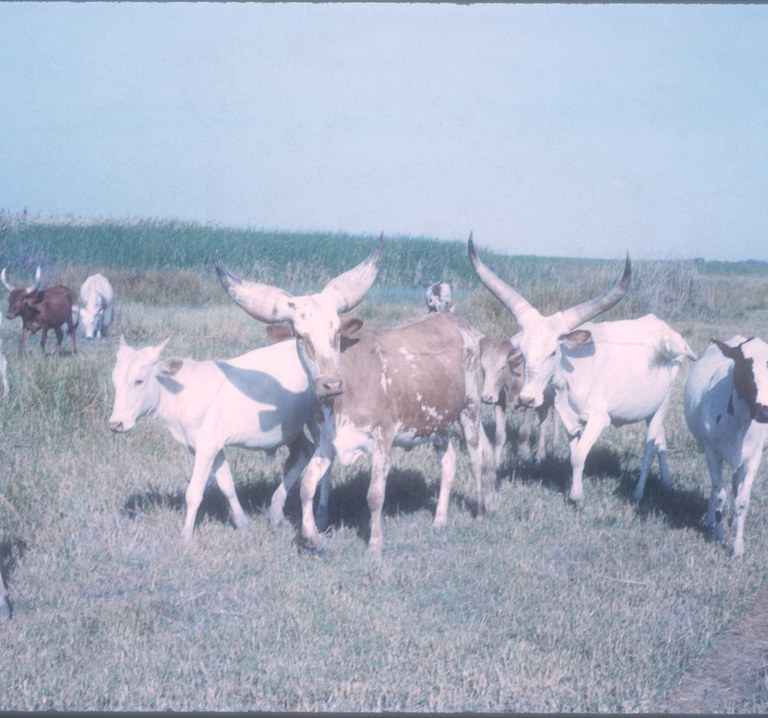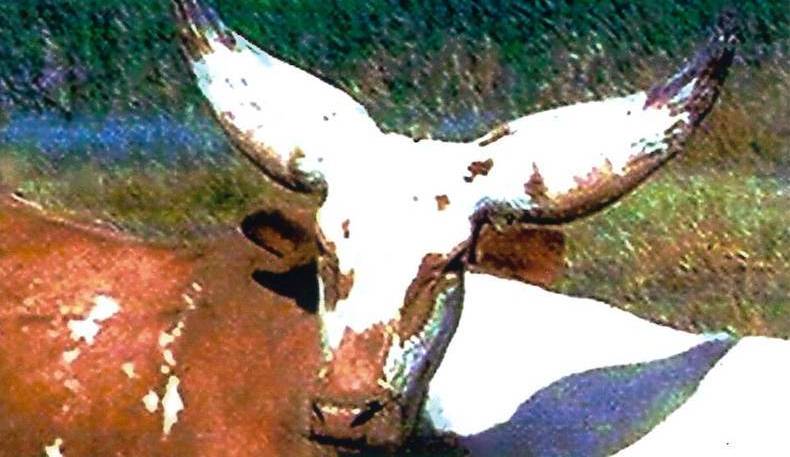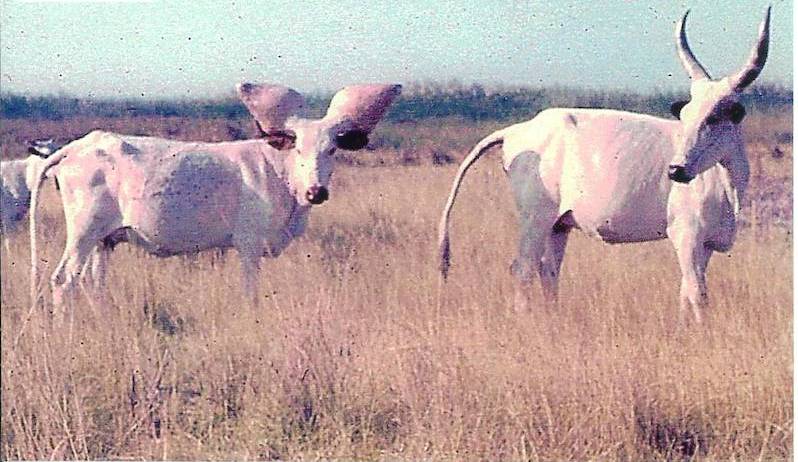Kuri Cattle
 Also known by: Kouri, Baharié, Buduma, Budumu, Boudouma, Chad, Dongolé, Kuburi, White Lake Chad
Also known by: Kouri, Baharié, Buduma, Budumu, Boudouma, Chad, Dongolé, Kuburi, White Lake Chad
The gigantic bulbous horns are an unmistakable trait of the Kuri, although the range of the size and shape is much broader than people think. These cattle are native to the shores of Lake Chad where Cameroon, Chad, Niger and Nigeria join. The Kuri are believe to be descended from the Hamitic Longhorn cattle and have been herded by the Buduma and Kuri peoples for centuries.
The tribesmen were strict in their selection of animals for their horns, many of which
grow in a lyre or crescent shape. The horns sometimes reach 130 cm in length and
55 cm in diameter. Most remarkable is the unique pear shape of the horns. The horns
also may be more varied in sizes and shapes than records demonstrate.
These animals are kept as dairy cattle in herds of approximately 30 females with one bull. The animals spend several hours each day in the water swimming in search of water plants for food. It is thought that the horns act as floats. The cattle are acclimated to water to such a degree that they survive with difficulty away from their indigenous area. They are easily affected by the sun if unable to bathe. Because of this, the Kuri are largely unsuitable as working animals. The bulls, which are docile and friendly in temperament, are occasionally used as pack animals but they are slow and tire easily. The females yield 4 liters of milk a day after nursing their calves.
 The Kuri are tall for an African breed, with a long back, shallow body and a large,
bony rump. The legs are strong, long and bony with large, widely cleft hooves. Kuri
are usually white in color. The females are 135 to 145 cm in height and average 400
kg in weight. The bulls range from 152 to 180 cm and average 475 kg of weight. Some
males will reach 600 kg.
The Kuri are tall for an African breed, with a long back, shallow body and a large,
bony rump. The legs are strong, long and bony with large, widely cleft hooves. Kuri
are usually white in color. The females are 135 to 145 cm in height and average 400
kg in weight. The bulls range from 152 to 180 cm and average 475 kg of weight. Some
males will reach 600 kg.
Currently, the breed is best case scenario, endangered, and could be near extinction. No new photos on the internet have surfaced recently.
References
Genus Bos: Cattle Breeds of the World, 1985, MSO-AGVET (Merck & Co., Inc.), Rahway, N.J.
Mason, I.L. 1996. A World Dictionary of Livestock Breeds, Types and Varieties. Fourth
Edition. C.A.B International. 273 pp.
